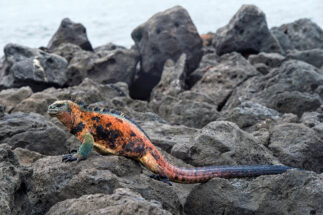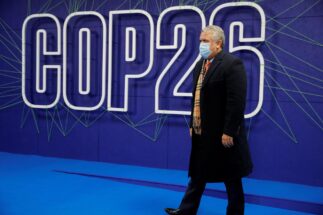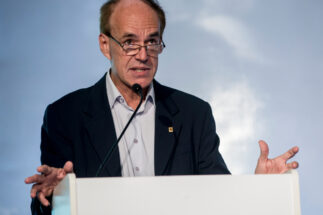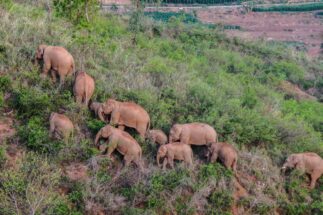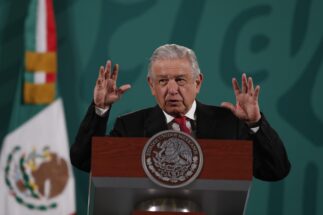With countries trying to bounce back from the economic crisis caused by the Covid-19 pandemic, finance has been one of the main issues at COP26, the UN’s crucial climate change conference currently taking place in Glasgow. So far, governments and the private sector have committed new funding for climate mitigation and adaptation, and developing nations have called for even more support.
For Latin America, COP26 was an opportunity to reiterate their claim for debt reduction from bilateral and multilateral creditors, in exchange for further climate and biodiversity commitments. In his speech at the first week’s leaders’ summit, Argentina’s president, Alberto Fernández, called for a renewed focus on debt-for-nature swaps – a relief mechanism that sees a portion of a developing nation’s debt written off in exchange for environmental schemes, and one which was popular in the region decades ago.
In an interview with Diálogo Chino, Margaret Kuhlow, Finance Practice Leader at the World Wildlife Fund (WWF), discussed the most recent developments in climate and biodiversity finance at COP26. She highlighted an increasing interest among the private sector in exploring new tools for green finance and revisiting older ones, such as debt-for-nature swaps.

Diálogo Chino: Is the financial sector starting to respond to the climate and biodiversity crisis?
Margaret Kuhlow: What has been exciting about this COP is the amount of private sector interest, increasingly making real commitments related to their own activities. Many financial institutions pledged to align their portfolios to the 1.5C target, making regular and transparent reporting on their progress. It’s a qualitatively different conversation compared to COP25. Still, key questions remain on whether they will deliver – and where are the institutions that haven’t made any pledges?
The challenge is to match that with the public sector. Without real public sector movement, either for getting the US$100 billion pledge in place or regulatory commitments to look at fossil fuel subsidies – which undermine market signals – it’s going to be hard to get there. The private sector’s commitments can’t deliver what is needed without the public sector.
We’ve seen a big push by Latin American governments at COP26 on reintroducing debt-for-nature swaps, a popular finance instrument decades ago. Can it be a solution amid the high levels of debt?
When they were introduced, debt-for-nature swaps showed that you could tie debt and investment in nature together. One of the challenges is that they are hard to scale, to negotiate and to structure. I wonder if we wouldn’t be able to deliver more investment in nature and debt relief with a different instrument. Conversations happening at COP are not whether they work or not; they are focused on how to scale these sorts of things.
And how can that happen? Especially thinking of indebted Latin American countries like Argentina, which is in ongoing negotiations over debt restructuring with the International Monetary Fund (IMF).
The world of debt has changed from when debt-for-nature swaps were started, in terms of who holds the debt, and the nature of the debt. The World Bank and the IMF have shown some willingness, by launching a climate, nature and debt initiative. This is not providing new money, but it is a place to have a conversation about what the debt looks like and what the opportunity for nature investments is, and to structure these in a bigger and more efficient way. But the IMF and World Bank don’t hold the majority of the debt anymore – a lot is held by bilateral creditors such as China. So, unless you get them into this conversation, there is much less leverage [for swaps] than in the 1980s, when these mechanisms were used for the first time.
What are the incentives for a major bilateral creditor like China to lead on debt relief for nature?
China is hosting the biodiversity COP15 in Kunming, and has expressed a lot of interest in the idea of an “ecological civilisation”. And, domestically, they have been making progress in changing regulations and trying to be much more cautious about environmental impacts. China recently committed US$232 million for biodiversity protection in developing countries at COP15. The question is whether they will use that for debt-for-nature swaps or for investment.
When China announced that it was no longer going to finance coal in foreign countries, that was very significant, not just because of the volume [of their overseas investments] but also because they have been reticent to push matters outside of China. Whether that was just for coal or an indication of broader interest, that’s still an open question.
Brazil has made appeals for international finance to protect the Amazon, and it has a big presence at COP. How do you deal with this, when there are questions about the credibility of any plan, given the gap between rhetoric and action at home?
One of the key ways that you check on the commitments at COP, such as that on no deforestation by 2030, is transparency. The commitment needs to be public and the follow-up has to be monitorable and verifiable – and that’s in Brazil or anywhere. We have increasing abilities to monitor commitments with satellite data. Transparency is the key.
You mention that the world of debt has changed, and there have recently been calls for new tools for green finance. Apart from debt-for-nature swaps, what kind of instruments have been emerging that should also be scaled up?
Green bonds are 15 years old now, but what’s new is the expansion of sovereign green bonds issuance. That’s really important for nature. There are now about 25 green bond issuances, and every single one has included investments in national parks and other natural areas, as sovereign states have an interest in the economic benefits that come from investing in nature. Then there’s also green loans, or sustainability-linked loans, which are a whole industry: they tie the price of the debt to environmental performance and can be more or less expensive, depending on how the debtor performs.
IMF and World Bank conditionality policies were always about fiscal and social policies. Could you have them for climate and biodiversity
That’s the nature of the conversation banks, funders and donor agencies are having with their shareholders. We recently did an analysis that demonstrates the relationship between countries’ natural capital and their ability to repay debt and grow economically, [showing that] as you deplete your natural resources you undermine your ability to grow. We also developed a Climate & Nature Sovereign Bond Index to take that analysis and turn it into the index of the kind that regular investors are used to using.


